
Lap pools are a great option if you're more interested in exercising than hanging out on a floatie. Learn all about lap pool costs in this guide.
Keep algae at bay and your water crystal clear


Do you know how to clean an aboveground pool to keep it swimmable all season long? Having a pool is a great way to beat the summer heat, but skip a chlorine shock treatment, neglect to vacuum the pool bottom, or delay a filter cleaning, and that crystal-blue water you found so inviting just a few days ago will transform into a swampy green mess.
An aboveground pool can be a hefty financial investment, so keeping it clean is crucial. Below, we dive into the ins and outs of keeping your pool clean and offer tips for preventative maintenance.
Rashes, red eyes, green water, and stained liners—all unwelcome side effects of having a dirty pool—are guaranteed to ruin a day of swimming. Here’s why you shouldn’t neglect weekly pool maintenance for your aboveground pool.
It’s harder to maintain the proper chlorine levels and pH in a dirty pool. When these levels get out of whack, the pool water can cause what’s known as recreational water illnesses (RWIs). RWIs aren’t pleasant and include diarrhea, ear infections, respiratory infections, inflamed lungs and eyes, and rashes.
Failing to periodically skim the pool, clean the filter, and add chlorine allows algae spores to take hold and grow inside your pool, making it an unsightly shade of green. While not directly dangerous to your health, algae can develop into different bacteria that are dangerous, like E.coli. And swimming in a pool of E.coli bacteria is definitely unsafe, as it can cause gastrointestinal problems or fever.
If you slack on maintenance, you can end up with a slick film over the pool's surfaces, including the pool bottom, walls, ladders, and steps. In addition to creating an unpleasant slimy feel, these slippery surfaces also increase the likelihood of accidents. And a pool is the last place you want to have a slip and fall with the added water element.
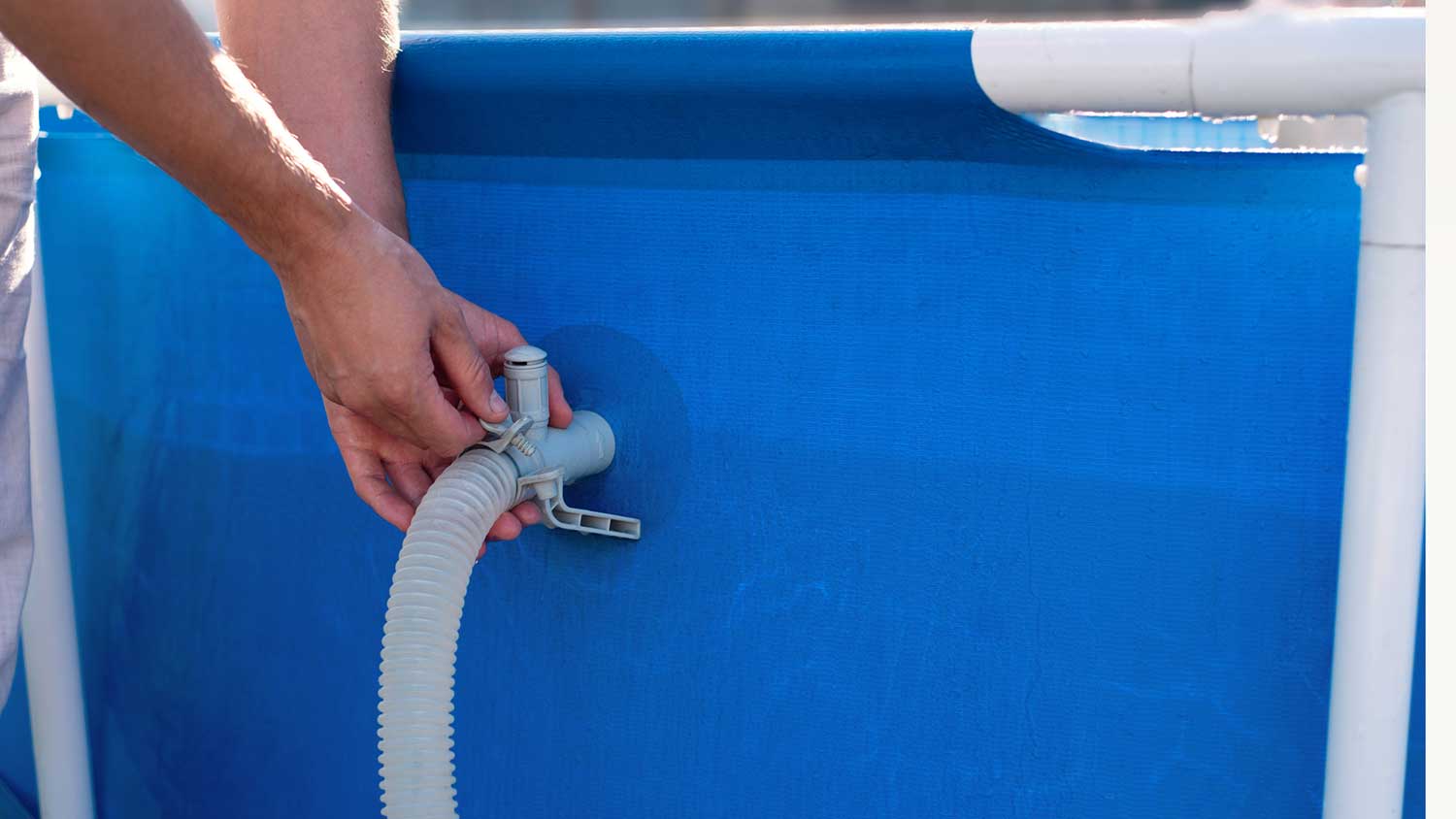
If you neglect your pool and allow algae and debris to build up, it will eventually clog your pool’s plumbing, including its filter and pump. This can lead to costly repairs and shorten the life span of this expensive equipment.
Most aboveground pools have vinyl liners on their interiors. While these liners are tough, they aren’t indestructible. If you allow leaves, tree branches, and other debris to build up on the pool bottom, they’ll eventually decay and release tannins capable of staining the vinyl.
Additionally, failing to maintain the proper pH can cause the pool water to become hard. Hard water has a high concentration of minerals that can create scaling on the liner and ladder.
As mentioned above, the vinyl lining of your aboveground pool is not indestructible. Sharp debris like sticks can scrape a hole in your liner, which is why it’s so important to clean those out as soon as possible. The cost of a new pool liner is $2,500 on average, so getting your money’s worth out of your existing one is best.
The cost of pool maintenance for an aboveground pool is about $30 to $260 per month, depending on its size. This service typically covers cleaning out the traps and filters, skimming the water, vacuuming and brushing the walls and bottom, and adding necessary chemicals.
If you plan to DIY your pool maintenance, you’ll need to purchase an aboveground pool maintenance kit that includes a skimmer, brush, and vacuum for about $40 to $50. After that initial cost, plan on spending between $5 and $15 a month on pool chemicals and water testing kits.
It doesn’t take an experienced pro to keep an aboveground pool in tip-top shape, but it does require effort and the right tools and chemicals. Here’s how to keep an aboveground pool clean and maintained so you can use it the whole season.
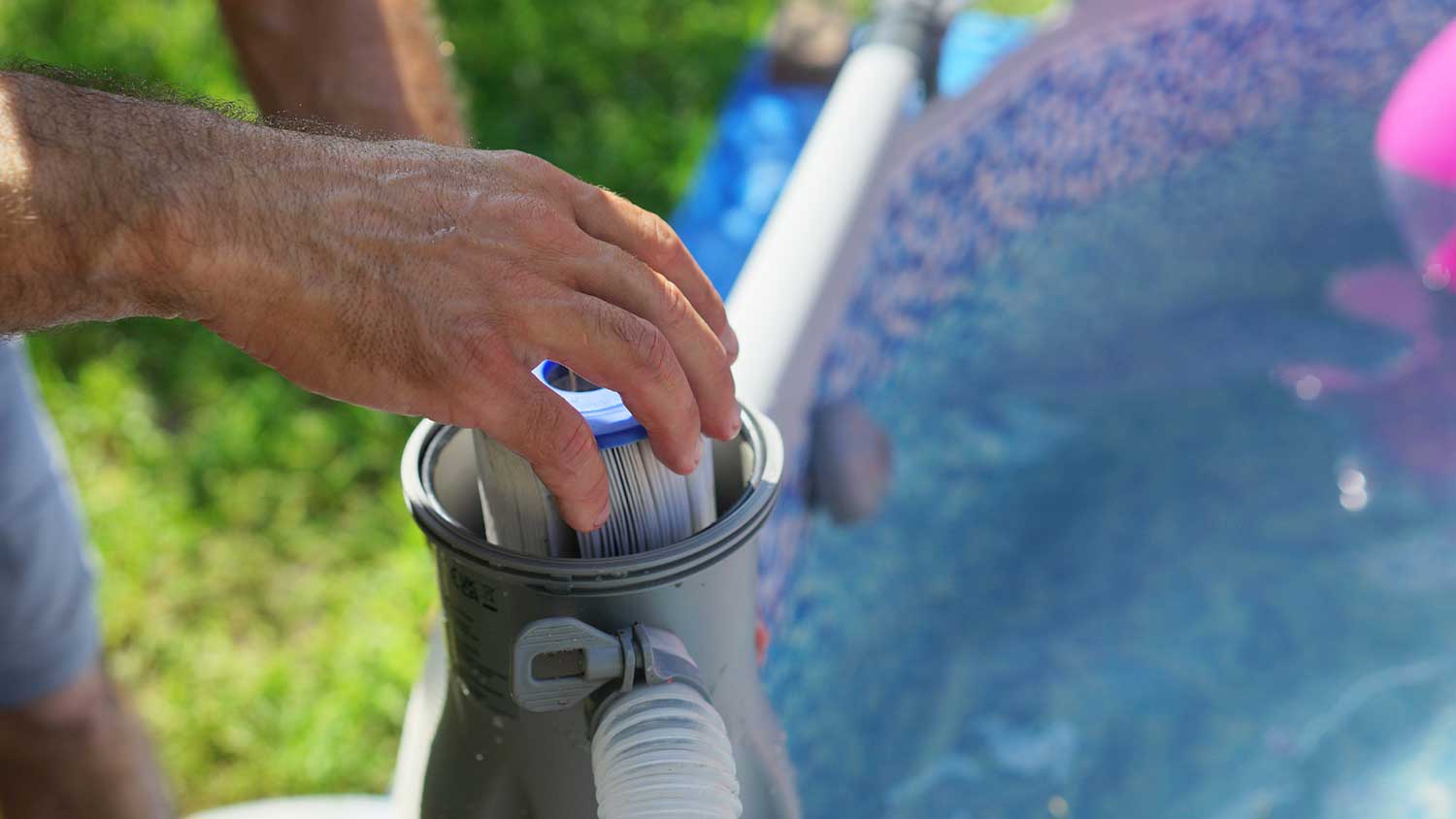
Your pump and filter are the first lines of defense against the algae, scale, and debris that threatens your pool’s cleanliness. Run your pool pump at least eight hours a day to ensure every drop of water cycles through the filter at least once daily.
Of course, running the water through the filter won't do much good if it’s full of dirt. Depending on the type of pool filter you have, you’ll need to take a few steps to clean your pool filter and ensure it stays unclogged so your water is sparkling.
If your pool uses a traditional cartridge filter, follow the following steps to clean it. Aim for a cleaning schedule of every 2 to 4 weeks for a small filter, every week to 2 weeks for a medium filter, and every 3 to 4 months for a large filter.
Turn off the pool pump and release pressure from the system.
Remove the pool cartridge.
Rinse with a garden hose (not a high-pressure nozzle like on a power washer) to remove debris.
Soak the cartridge in filter cleaner solution according to manufacturer guidelines to remove oils and deeply stained dirt.
Rinse the cartridge with clean water from a garden hose and let dry before reinstalling.
Sand filters are popular due to their simplicity. Aim to backwash and rinse your sand filter every 4 to 6 weeks or when your pump’s pressure gauge is reading 8 to 10 psi higher than normal.
Backwash your sand filter by turning off the pool pump, setting the filter mode to “backwash,” and turning the pump back on.
After about 5 minutes, the water should run clear. When this happens, turn off the pump again. Set the filter mode to “rinse,” turn the pump back on, and let it run for about a minute.
Turn the pump off, set the filter mode back to “filter”, and turn pump back on.
You’ll also need to change the pool filter sand every three to five years to maintain clean pool water.
DE pool filters are often regarded as the most thorough but also the most complex to clean and maintain.
Backwash your DE filter as you would a sand filter, making sure to turn off the pump to set the filter setting to “backwash” (every month).
After backwashing, turn the pump off and release the pressure. Open the filter tank and remove the fingers or grids, rinsing with a garden hose (every two months).
Inspect fingers or grids for any damage and replace (yearly).
Reinstall the filter and turn the filter setting back to “filter.”
Add fresh DE powder through your pool’s skimmer per the manufacturer’s instructions (after every backwash).
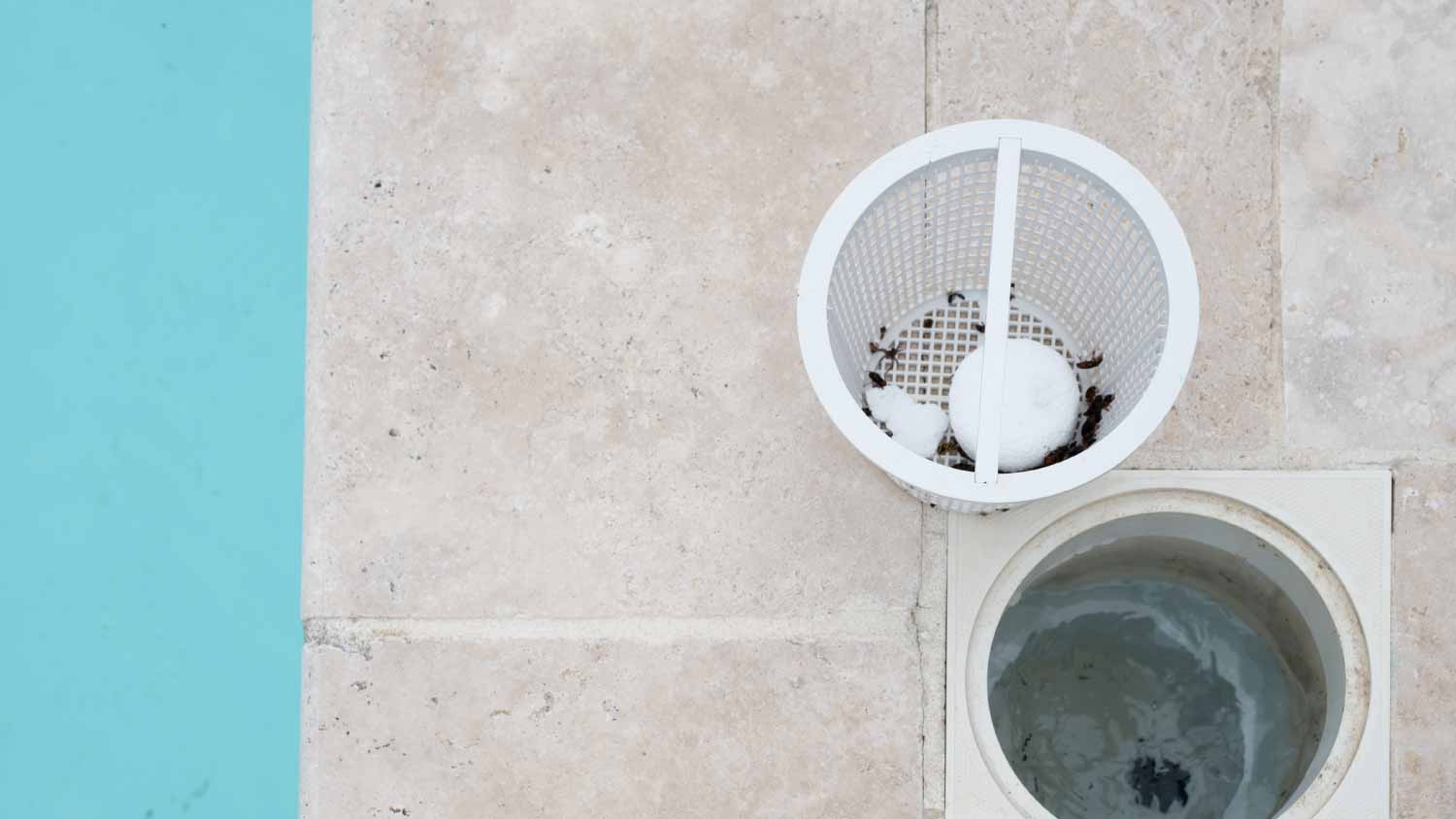
In addition to cleaning the pool filter, you also need to pay attention to the basket inside the skimmer. This basket collects leaves, twigs, insects, and other large debris that circulates with the pool water. Without this basket, those large debris items would enter the pool filter. Check and clean your skimmer basket at least once a week.

While your pump filter does the majority of cleaning your pool, some debris will evade it by floating near the surface of the water. To collect this debris, use a flat skimmer attached to a telescoping pole. Sweep the skimmer through the water to capture leaves, insects, and other particles.
Sometimes, a passing storm can dump large amounts of leaves, twigs, and branches into your pool. Since a flat skimmer won’t be able to handle these larger loads, you’ll need to use a leaf bag attachment to scoop this debris out.

Your pool will inevitably have dead zones in corners and around the ladder with poor water circulation. This water won’t make it into the filter, allowing algae spores to collect and attach to the wall and ladder.
Attach a brush head to your telescoping pole and hit these areas about once a week to remove the algae spores. Work your way around the walls, brushing downward to loosen the algae, and scrub the pool bottom. Don’t forget to scrub the ladder, which is also a prime location for algae growth.
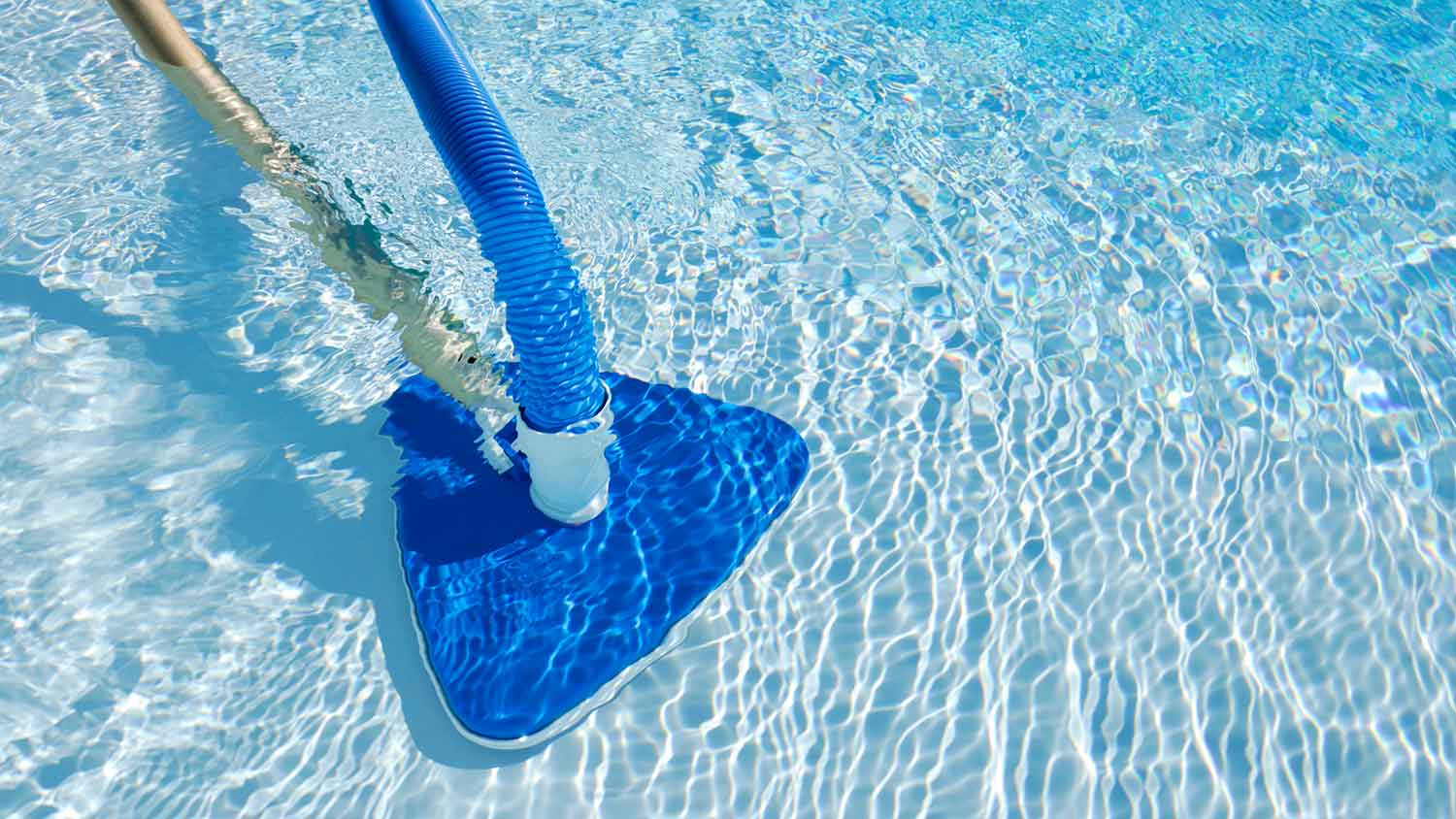
Vacuuming your pool is the best way to attack dirt and leaves collecting on the pool bottom. Attach the vacuum hose to the skimmer inlet and the vacuum head to your telescoping pole. Work your way around the pool, and move the head around the bottom and walls to collect any debris. Everything you suck up will end up in the pool pump basket, so don’t forget to empty it afterward.
Vacuum the pool at least once a week to prevent leaves and dirt from decaying and messing with your pool’s chemical balance. If you hate vacuuming, consider investing in an automatic pool vacuum, which will do the job for you.
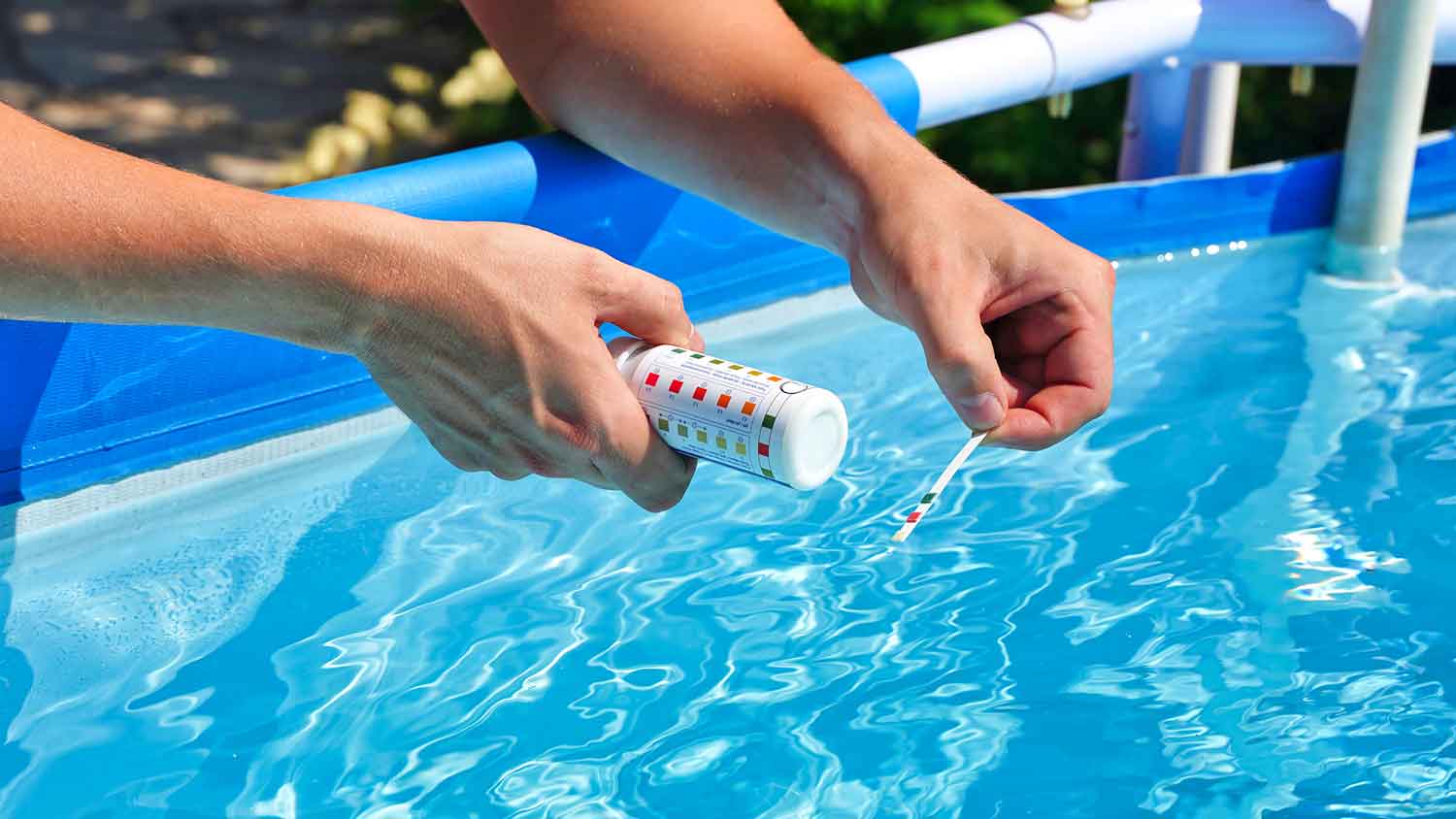
Proper pool chemistry is key to keeping your pool crystal clear and ensuring the water is safe for swimming. Test the pool water using a pool test kit at least twice a week to ensure the pH and chlorine levels are in the ideal range and add chemicals as needed. A pool’s pH should be between 7.2 and 7.6, while chlorine levels should fall between 1 and 3 parts per million.
If the pH is low, add a pH increaser to get the water back to its proper pH. If it's high, add a pH reducer. Add chlorine tablets if the chlorine levels are low. If the chlorine is too high, allow the pool to sit unused for a day or two until the levels come down.
You’ve learned how to clean an aboveground pool, but what about general pool maintenance? While pool maintenance will always be a chore, following these tips can make it easier.
Shock the pool weekly: Even when using the above cleaning regimen, sweat and suntan lotion from swimmers and debris from storms can still build up in the pool, dirtying the water. Forgetting to attend to your pool chemistry is one of the biggest pool care mistakes to avoid. Add shock once a week to raise the chlorine levels and kill off these impurities.
Cover the pool: One of the best ways to maintain pristine water conditions is by keeping debris out. Invest in a pool cover and use it whenever the pool is not in use for an extended period or a storm is coming.
The cover will keep leaves, twigs, and dirt out, reducing the time you’ll need to spend skimming the water and vacuuming the bottom. If you choose a cover that acts as a solar blanket, you’ll benefit from warmer pool water.
Winterize the pool: Winterizing your pool is one of the best ways to maintain your pool and prepare it for the off-season. Use the above steps to clean your pool thoroughly, then add special winterizing chemicals that will prevent algae growth during the winter. Store any removable accessories, such as ladders, filters, and water lines, and cover the pool to prevent leaves and dirt from falling into it.
There’s good reason to consider hiring a professional pool cleaner near you to maintain your aboveground pool. Since a pool demands weekly maintenance, it can be very time-consuming to keep it clean and properly balanced. Knowing how much of each chemical to add to maintain the right pool chemistry can also be challenging.
While hiring a local pool service company will take pool cleanup off your weekly to-do list, leaving you time to work on your tan, it is significantly more expensive than doing it yourself. Expect to pay $30 to $260 monthly for a pool maintenance service. If you choose to take it on, you’ll pay between $5 and $15 monthly for chemicals and test kits.
From average costs to expert advice, get all the answers you need to get your job done.

Lap pools are a great option if you're more interested in exercising than hanging out on a floatie. Learn all about lap pool costs in this guide.

Thinking of adding a plunge pool to your backyard? Find out how much plunge pools cost, from materials to labor to add-on features.

Removing a pool is a labor-intensive job, but the investment can be worth it. Use this pool removal cost guide to estimate how much you’ll pay for the service.

A pool cover protects against debris and temperature changes while also preventing accidents. This guide breaks down the five main types of pool covers to choose from.

You can build an above ground pool on uneven ground if you take the time to level it. This guide will show you how to level ground for a pool in a few easy steps.

Hiring the right pro to build your pool is critical for a successful project. Find out what questions to ask pool builders to find the right match.